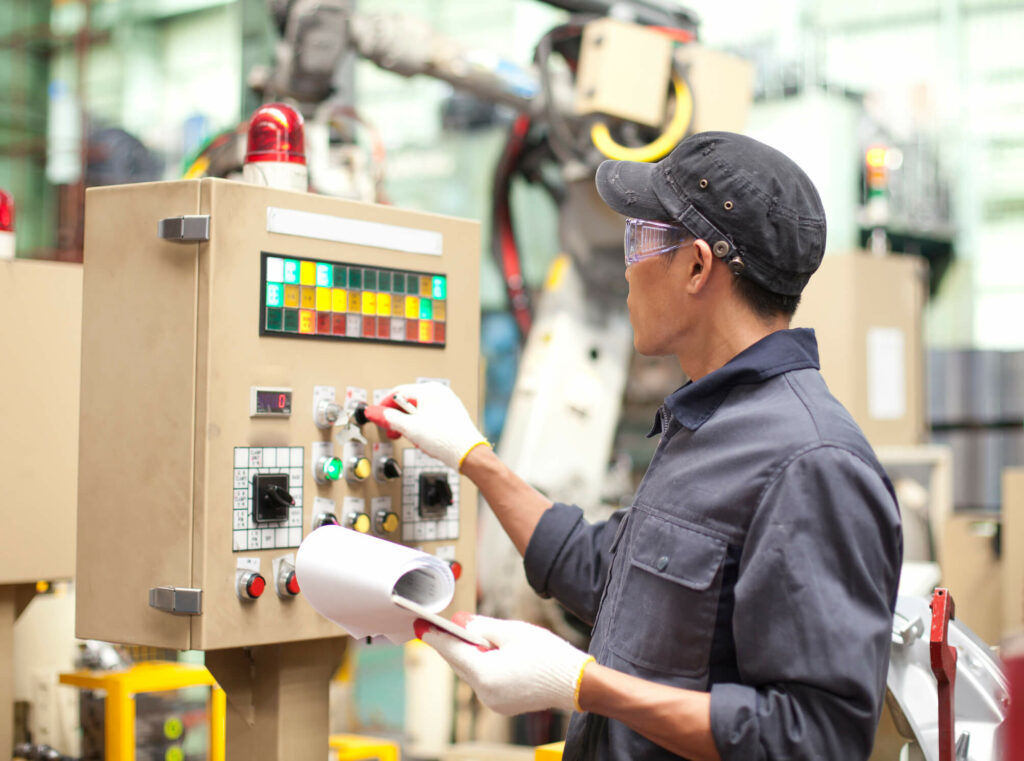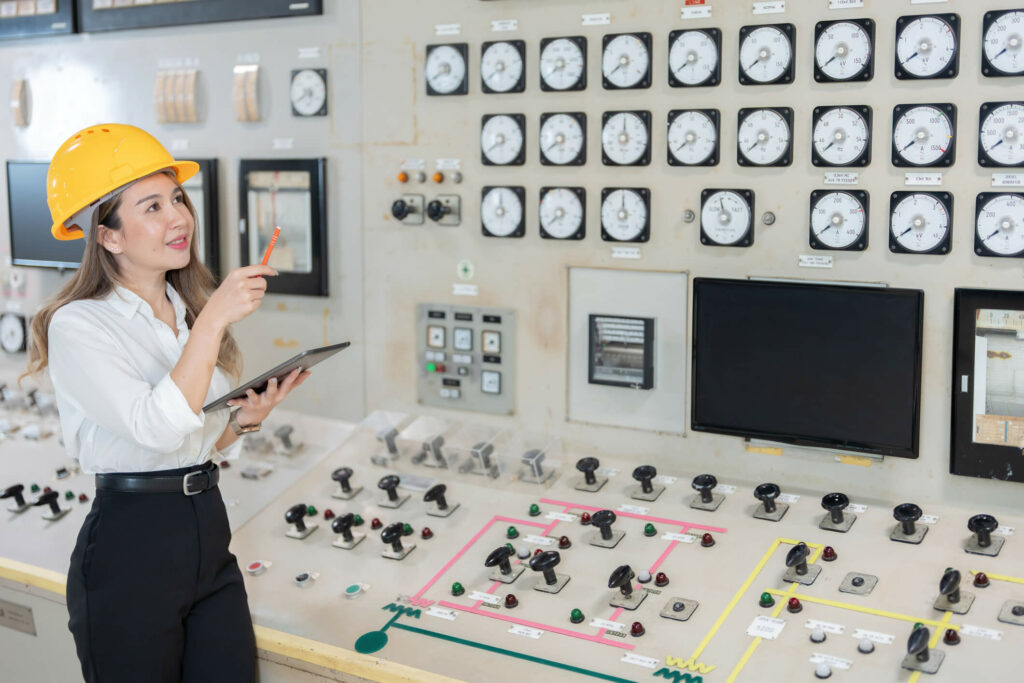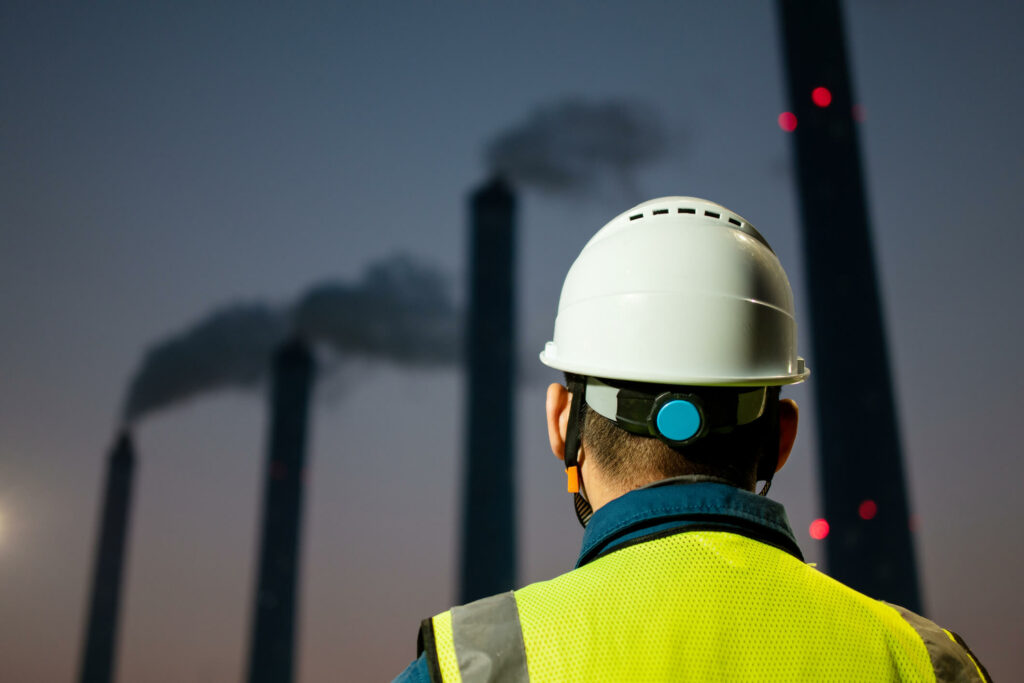Put yourself in the shoes of a construction maintenance manager at a leading construction company.
You’ve been responsible for taking care of equipment and fleet maintenance across multiple jobsites. You’re also responsible for maintenance compliance, downtime prevention, budgeting, and tech management.
Okay, let’s get this straight. You wouldn’t want to face surprises in audits, supply chains, or maintenance costs. You pay close attention to practical news, not just corporate fluff. You always want to stay in control, valued, and ahead of the game.
You’ve always been the guy who could fix anything. However, in 2025, things seem to be getting a little challenging for you. Your job is not just about wrenches and grease guns anymore. Now, you’re expected to juggle surprise audits, increasing costs for both parts and people, digital records and analytics, and security threats targeting your equipment.
You need to take care of all these tasks, while also keeping job sites running smoothly and your bosses happy.
Check out our podcast on July 2025’s top updates every construction maintenance manager should know to stay efficient and avoid delays.
Here’s the deal: EZO’s major headlines for July contain essential information that you must know to stay successful in your job.
Even if you’re not buying new machines this month, these trends might impact your:
- Budget forecasts,
- Crew workload,
- Compliance status,
- Supplier relationships, and
- Overall uptime.
So, without further ado, let’s dive into 10 crucial updates from July 2025 that could blindside your maintenance operations if you’re not ready.
1. Parts availability still fragile, even as supply chains “normalize”
While the supply chains might be smoother now as compared to when tariffs hit them like a truckload, the shortage of parts may still be a problem for you.
Ports are indeed moving again, and lead times are better than they were in the chaos of 2022 and 2023. However, Original Equipment Manufacturers (OEMs) are still rationing high-wear items like hydraulic seals, electrical control units, and DEF sensors.
According to reports from Equipment World, even non-critical parts now have lead times of 6 to 8 weeks. Many large distributors have begun stockpiling locally, but this is not enough everywhere.
Companies like United Rentals and Sunbelt expressed that they are increasing local inventories of critical Stock Keeping Units (SKUs) to buffer against unexpected gaps. However, parts availability still depends on region and brand.
How does this impact maintenance managers in construction?
- You’ll need to pre-order essential parts sooner than ever to avoid unexpected downtime.
- It might be time to build a “critical parts inventory” for the stuff that keeps on breaking down the most.
- Carrying more inventory means planning for higher parts budgets and maybe more storage space.
Because, let’s be honest, nobody wants a million-dollar bulldozer stuck idle for lack of a $50 seal.
2. The skilled tech shortage is driving up wages and poaching
It is true that finding skilled technicians is becoming increasingly difficult. Not only are they hard to find, but they are also costly to maintain.
According to AGC, the average hourly wage for construction workers rose to $37.20 in June 2025, up nearly 8% from the same period last year. On the other hand, wages for mechanics and technicians have increased by 7 to 9% in 2025 alone.
OEM dealerships are attracting talent more than ever. The large dealerships are offering higher salaries, better benefits, and paid training on new equipment.
Now, this makes it difficult for mid-sized contractors to compete and leaves shops short-staffed as advanced technology continues to progress every day.
Let’s face it. Tech schools can’t produce new talent fast enough to replace retiring veterans, meaning many shops are losing years of valuable knowledge.
How does this impact maintenance managers like you?
- You’ll likely need to increase wages or offer retention bonuses to retain good techs from going elsewhere.
- Tools like mobile CMMS can help fewer technicians stay productive by reducing paperwork and wasted time.
- Night shifts and remote sites may be more challenging to cover, potentially leading to delayed repairs and increased overtime costs.
Empty shifts mean idle equipment, and that heavily impacts your bottom line.
3. Learning curve for maintenance of electric equipment
Electric equipment is here to make a strong hold in the industry, but is it the right time to rejoice? While electric machines are available, maintenance is still lagging.
OEMs are rolling out more electric models of loaders, aerial lifts, and excavators to meet stricter emissions targets. Industry reports indicate that electric models could make up 25 to 30% of specific fleet types by 2027.
However, there’s a problem:
- There are only a few techs who are trained to diagnose high-voltage systems.
- EV battery packs and drivetrains require specialized tools that are expensive.
- Q2 data shows higher downtime for electric excavators due to unfamiliar troubleshooting and long waits for specialized parts.
How does this impact maintenance managers?
- Plan to send key technicians to OEM-specific EV training to avoid costly knowledge gaps.
- Budget for new diagnostic tools for electric systems.
- Be prepared for more extended downtime windows when electric machines fail.
EVs might be here for an indefinite time, but fixing them shouldn’t wait for that long.

4. New reporting mandates from insurance providers
When it comes to preparing documents and collecting proof of diligent maintenance practices, insurance companies are raising the bar for contractors. A quick conversation or a dusty file cabinet is not enough. Insurance providers now require hard evidence that you’re running a tight ship.
Major insurers, such as Travelers and Liberty Mutual, have begun requiring contractors to submit detailed preventive maintenance (PM) logs. These logs serve as proof that technicians are adequately trained and certified, as well as provide detailed reports on equipment condition, as part of the underwriting process or during policy renewals.
What has caused this shift?
Insurers are more than ever focused on reducing their risk exposure. Equipment failures not only incur repair costs but also often lead to costly project delays, liability claims, and even safety incidents. That’s why insurers always want to see documented proof that:
- Preventive maintenance is being performed on schedule.
- Only qualified, certified technicians are servicing critical machinery.
- Equipment is inspected regularly and kept in safe operating condition.
Failure to provide this level of documentation may result in higher insurance premiums or, in severe cases, non-renewal of your policy.
CBIZ has predicted a 1% to 9% increase in CGL premiums throughout 2025 as insurers tightened their underwriting standards across the industry.
How does this impact maintenance managers?
- You can’t rely on handwritten logs or scattered spreadsheets. You need digital maintenance records that are clean, complete, and easily shareable for audits or insurance reviews.
- Technician certifications should be tracked digitally, ensuring that proof of qualifications is readily available at a moment’s notice.
- Schedule regular internal audits of preventive maintenance logs to spot gaps before insurers do.
- One missing record or a gap in documentation could cost your company tens of thousands of dollars in premium hikes, or worse, leave them scrambling for coverage.
You must remember that insurance documentation is no longer optional. It is now a required part of the process and critical for protecting the company’s bottom line and maintaining your insurability.
5. OSHA ramping up surprise jobsite inspections
Construction maintenance managers need to be alert because the Occupational Safety and Health Administration (OSHA) is stepping up enforcement, and they’re not giving anyone a courtesy call first.
In July 2025, OSHA announced plans for a significant increase in random, unannounced inspections, focusing on:
- High-heat states like Arizona and Texas, where working conditions are hazardous and heat-related violations are increasing.
- Large projects valued over $5 million that involve complex operations, bigger crews, and higher stakes for safety compliance.
Moreover, fines for record-keeping failures have jumped from $15,625 per violation to $16,131 per violation. This is a severe financial blow, especially when the issue might be something as simple as a missing file or an outdated inspection log.
According to OSHA data, the construction industry has seen a 12% increase in surprise inspections so far in 2025 compared to the same period last year.
How does this impact maintenance managers like you?
- Ensure that digital inspection records are kept up-to-date and organized, so information is instantly accessible when inspectors arrive.
- The team should be trained on how to quickly retrieve documents, from safety protocols to equipment maintenance logs, reducing the risk of fines for delays or incomplete information.
- Conducting regular internal audits, at least monthly, is critical to verify that all required records are complete and accurate, ensuring nothing slips through the cracks.
After all, nobody would want to pay around $19,000 just because a form was missing or misfiled. You should focus on proactive record-keeping and preparedness to avoid hefty fines.

6. Contractors are experimenting with predictive analytics; ROI still uncertain
Predictive maintenance sounds good, but it can be a cautious experiment for many contractors. Undoubtedly, this technology is impressive. Vendors are pushing for systems that deploy:
- Sensors monitoring vibrations, temperature, oil viscosity, and other critical metrics to spot subtle signs of trouble before equipment breaks down.
- AI algorithms designed to crunch that sensor data and predict potential failures days—or even weeks—in advance, letting maintenance teams intervene proactively rather than adopting a reactive maintenance approach.
This can save a significant amount of money by preventing costly breakdowns, reducing unplanned downtime, and extending equipment lifespan.
However, mid-sized contractors are a little cautious because:
- While the technology is promising, it can also be expensive to implement.
- Data overload happens fast. Sensors generate vast volumes of information that require specialized expertise, or expensive software, to analyze and translate into practical maintenance actions.
- For smaller operations, the ROI remains fuzzy. While large contractors may be able to justify the investment across a vast fleet, it’s less clear whether the benefits outweigh the costs for smaller companies.
Due to cost concerns, only a small number of contractors have managed to implement predictive maintenance systems on a full scale.
How does this impact maintenance managers in construction?
- Consider piloting predictive analytics tools on the most critical, high-value assets to test the waters and prove value before implementing them on a wide scale.
- Look for solutions that translate AI outputs into clear, actionable recommendations, rather than overwhelming dashboards filled with raw data.
- Be prepared to justify the investment to your CFO or leadership team, demonstrating how predictive tools can help prevent major failures, reduce downtime costs, and potentially lower insurance premiums over time.
Ultimately, predictive maintenance can help you save millions or drain your budget if it’s not used practically—so decide wisely.

7. Contractor collaboration platforms, including maintenance data sharing, are becoming the standard
Digital handovers have become the new normal. Gone are the days when project closeouts meant handing over paper binders filled with equipment manuals and scattered service logs.
These days, big general contractors (GCs) and project owners demand complete digital records as part of project turnover. They expect:
- Detailed maintenance histories for every piece of equipment used on the job.
- Compliance records and certifications to be uploaded onto shared digital portals.
- Seamless integration of asset data into broader project management tools.
Top construction equipment management platforms now integrate asset and maintenance data directly into project workflows, making it easier to track asset usage and service history, provide quick documentation during audits, and maintain transparency across key stakeholders. It can help you develop lean construction workflows, simplifying your operations.
However, this also raises the bar for expectations. Contractors who fail to provide these digital records risk appearing outdated—and potentially losing work to competitors who can.
It has been estimated that more than half of contractors expect digital asset data to be a standard part of project handovers by the end of 2025. This shows a significant shift in how construction projects are completed and how contractors prove they’ve delivered quality work.
How does this impact maintenance managers?
- Ensure your CMMS system can generate clean, shareable maintenance reports compatible with common collaboration platforms.
- Keep digital maintenance logs meticulously organized and audit-ready, so your team isn’t scrambling when closeout day arrives or when an owner requests records in the middle of the project. Failing to keep up with digital record-keeping could result in losing bids, delaying payments, or damaging relationships with key clients.
- Paper logs and scattered spreadsheets simply won’t be enough in an industry that is rapidly transitioning toward digital transparency.
Adopting digital collaboration tools isn’t just about convenience; it’s quickly becoming essential to staying competitive and maintaining trust with owners and GCs.
8. Diesel exhaust fluid (DEF) supply tightness is emerging again
Diesel Exhaust Fluid (DEF) could become a headache for you soon. After remaining stable for a couple of years, the DEF market is showing fresh signs of instability. Nitrogen-based fertilizers, particularly urea, saw the steepest rise, up 20% year-on-year to an average of US$390 per tonne, mainly due to two primary factors:
- Asian export restrictions by key producers limit overseas shipments to protect domestic agricultural supplies.
- Increased European demand for fertilizers is further tightening the global urea supply chain.
Because DEF relies on urea as a core ingredient, this ripple effect is now hitting the construction industry. DEF suppliers are already sounding alarms about:
- Potential price spikes in the coming months.
- Regional allocation measures that could restrict how much product is available in certain markets.
According to a report from Reuters, the DEF prices could climb another 10–15% by year-end, depending on how supply and geopolitical factors unfold.
How does this impact construction maintenance managers?
- Consider locking in DEF supply contracts as soon as possible to secure stable pricing and avoid last-minute panic buying.
- Add a buffer to your DEF budget for the remainder of 2025, anticipating higher costs if the market tightens further. Relying on spot purchases during a shortage could mean paying double, or even more, per-gallon, significantly impacting project costs.
- Above all, no DEF means Tier 4 machines stay idle, potentially disrupting work entirely and risking project delays, penalties, or strained client relationships.
Therefore, proactive planning around DEF is not optional; it’s critical to keep machines moving and projects on track as the remainder of the year unfolds.
9. Emissions tracking pressure growing, even for mid-sized contractors
Gone are the days when environmental compliance was only for the big companies. Now, it’s for everyone.
States like New York, California, and Illinois are leading the charge, bringing out new regulations that demand:
- CO₂ footprint reporting for construction operations.
- Detailed idle time logs to curb unnecessary emissions.
- Usage tracking for equipment exceeding 25 horsepower, ensuring fleets meet increasingly stringent emissions standards.
But it’s not just regulators paying attention. Even private project owners are beginning to demand sustainability data in RFPs and closeout documents, and they are using it as a deciding factor in awarding contracts.
As per the McKinsey report, $9.2 trillion must be spent each year on capital assets to meet global net-zero goals by 2025. Of this, 75% is needed for new construction. This scale of building will strongly impact carbon emissions, making it essential for infrastructure players to address embodied emissions from the beginning.
Contractors that fail to produce accurate emissions data could lose out on high-profile projects, face hefty fines for non-compliance, and damage relationships with environmentally conscious clients.
How does this impact maintenance managers?
- Invest in a CMMS system that can automatically track and report emissions data, from fuel usage to idle time and engine hours.
- Be prepared for difficult conversations about older diesel equipment that might not meet new emissions standards, including whether to retrofit, replace, or limit use.
- Missing required emissions data could disqualify your company from bidding on new projects or expose the business to regulatory fines and reputational damage.
It is critical to stay ahead of emissions tracking as it’s quickly becoming essential for survival in a competitive market.

Why does this matter for maintenance managers?
Even if you are not planning to purchase new equipment this month, the trends unfolding in July have the potential to reshape nearly every part of your world.
These trends will impact how you do the following:
- Forecast your budgets to account for rising costs of parts, labor, and critical supplies like DEF.
- Schedule your crews, especially as skilled tech shortages strain teams.
- Prepare for audits, whether from OSHA, insurance carriers, or project owners demanding digital documentation.
- Manage supplier relationships as part lead times fluctuate and vendors tighten their inventories.
- Stay compliant by navigating increasingly stringent emissions laws, safety regulations, and data privacy requirements.
In 2025, maintenance management is no longer just about fixing machines. You’re also managing:
- Data and documentation, making sure that every log and report is audit-ready.
- People and skill gaps, retaining talent, and training crews for new tech like EVs and predictive analytics.
- Regulatory risks, avoiding costly fines or lost business due to compliance failures.
- Financial surprises, as hidden costs that pop up in renewals, shortages, or unexpected thefts.
Let’s be honest: the shop floor is laden with digital, financial, and mechanical challenges.
However, knowledge should be your most effective tool to navigate these challenges. Staying ahead of these trends isn’t just about avoiding trouble; it’s about turning your maintenance operation into a strategic advantage, ready for whatever 2025 throws your way.
Conclusion: Knowledge is the best tool in your box
Let’s quickly recap the July reality:
- Supply chains are still shaky.
- Skilled technicians are scarce and costly.
- Electric gear is arriving fast, but it needs new skills.
- Insurers, owners, and regulators are all looking for digital records.
- Costs—from DEF to regulatory penalties—continue to rise.
2025 isn’t just about turning wrenches. It’s about running a smarter shop floor and avoiding surprises.
Therefore, you need to follow simple steps to be proactive, such as:
- Audit your tech stack and digital records.
- Train your team for EVs and digital compliance
- Monitor your parts and DEF supply chains now to avoid shortages.
- Tighten your insurance, OSHA, and project documentation processes.
Every construction maintenance manager would want fewer surprises. Let’s discover how EZO CMMS helps maintenance managers like you stay ahead of every change.
Take Charge of Your Work
Frequently asked questions
What is meant by “maintenance updates” in construction CMMS tools?
Maintenance updates refer to work orders, progress reports, asset status, inspection results, and preventive or corrective maintenance activity recorded in a CMMS.
Why are regular maintenance updates critical for construction assets?
They prevent unexpected failures, extend asset life, help budgeting, ensure safety, and reduce downtime costs.
How often should maintenance updates be performed for heavy construction equipment?
Typically after each use, weekly for preventive tasks, monthly/quarterly for in-depth inspections, and immediately when issues are detected.
What types of maintenance updates should be automated?
Preventive schedules, inspection reminders, part reorders, status changes, and notification of overdue work can all be automated in a CMMS.
How do I track and report maintenance updates to leadership effectively?
Use dashboards showing key metrics: open vs closed work orders, average repair time, cost of maintenance, asset uptime. Tools like EZO CMMS offer customizable reporting.
What are common challenges in keeping maintenance updates accurate and timely?
Challenges include lack of technician buy-in, delayed logging, missing parts info, no mobile access, and unclear workflows.
How can mobile access improve maintenance updates for construction sites?
Mobile access lets field techs update status in real time, upload photos, scan barcodes, reduce paperwork and data delay.
How do I ensure maintenance updates lead to better decision-making?
Ensure updates include root cause, cost, parts used, time taken. Analyze trends. Use CMMS tools like EZO to generate actionable insights.
How do I prioritize maintenance tasks when many updates are pending?
Prioritize based on safety risk, cost impact, frequency of failure, and criticality of the asset to operations.
What metrics should I follow to measure effectiveness of maintenance updates?
Key metrics include Mean Time Between Failures (MTBF), Mean Time To Repair (MTTR), asset availability, backlog count, maintenance cost vs budget.
How can I reduce maintenance backlog through better updates?
Use standardized update workflows, assign clear ownership, ensure visibility via dashboards, allocate resources appropriately.
How do construction maintenance updates influence budgeting and forecasting?
Accurate updates feed into cost prediction, schedule planning, asset renewals, spare parts inventory, helping forecast future spend.
What role do preventive vs reactive updates play in construction maintenance?
Preventive maintenance updates help avoid failures; reactive updates deal with breakdowns. Balanced strategy reduces total cost and improves reliability.
How often should I audit or review maintenance updates for quality?
Monthly reviews for immediate issues; quarterly deep audits of data quality, missing fields, delays; annual review of process effectiveness.
How can I use CMMS features to encourage regular maintenance updates?
Use notifications/reminders, mobile tools, simplify forms, offer training, enforce accountability via KPIs. EZO’s CMMS supports reminders, mobile entry, role-based dashboards.
What impact do delays in updates have on construction maintenance?
Delays lead to worse hidden problems, increased repair cost, downtime, safety risks, and inaccurate forecasting.
Can integrating IoT or sensors improve maintenance updates?
Yes. Sensors can trigger automated updates for temperature, vibration, runtime metrics, helping with predictive maintenance.
How do I migrate from paper / spreadsheets to digital maintenance updates?
Start with critical assets, use simple templates, get field teams involved, gradually roll out mobile CMMS (e.g. EZO), ensure data consistency and training.
What best practices ensure consistency in maintenance updates across sites/projects?
Use standard forms/checklists, define update frequency, centralize asset definitions, use the same CMMS workflows across locations.
How do software updates (of the CMMS itself) affect maintenance update workflows?
Software updates can improve efficiency (new features, bug fixes), but may disrupt workflows temporarily. Plan rollouts, test changes, communicate with users before deployment.
Was this helpful?
- 1. Parts availability still fragile, even as supply chains “normalize”
- 2. The skilled tech shortage is driving up wages and poaching
- 3. Learning curve for maintenance of electric equipment
- 4. New reporting mandates from insurance providers
- 5. OSHA ramping up surprise jobsite inspections
- 6. Contractors are experimenting with predictive analytics; ROI still uncertain
- 7. Contractor collaboration platforms, including maintenance data sharing, are becoming the standard
- 8. Diesel exhaust fluid (DEF) supply tightness is emerging again
- 9. Emissions tracking pressure growing, even for mid-sized contractors
- Why does this matter for maintenance managers?
- Conclusion: Knowledge is the best tool in your box
- Frequently asked questions
- What is meant by “maintenance updates” in construction CMMS tools?
- Why are regular maintenance updates critical for construction assets?
- How often should maintenance updates be performed for heavy construction equipment?
- What types of maintenance updates should be automated?
- How do I track and report maintenance updates to leadership effectively?
- What are common challenges in keeping maintenance updates accurate and timely?
- How can mobile access improve maintenance updates for construction sites?
- How do I ensure maintenance updates lead to better decision-making?
- How do I prioritize maintenance tasks when many updates are pending?
- What metrics should I follow to measure effectiveness of maintenance updates?
- How can I reduce maintenance backlog through better updates?
- How do construction maintenance updates influence budgeting and forecasting?
- What role do preventive vs reactive updates play in construction maintenance?
- How often should I audit or review maintenance updates for quality?
- How can I use CMMS features to encourage regular maintenance updates?
- What impact do delays in updates have on construction maintenance?
- Can integrating IoT or sensors improve maintenance updates?
- How do I migrate from paper / spreadsheets to digital maintenance updates?
- What best practices ensure consistency in maintenance updates across sites/projects?
- How do software updates (of the CMMS itself) affect maintenance update workflows?








